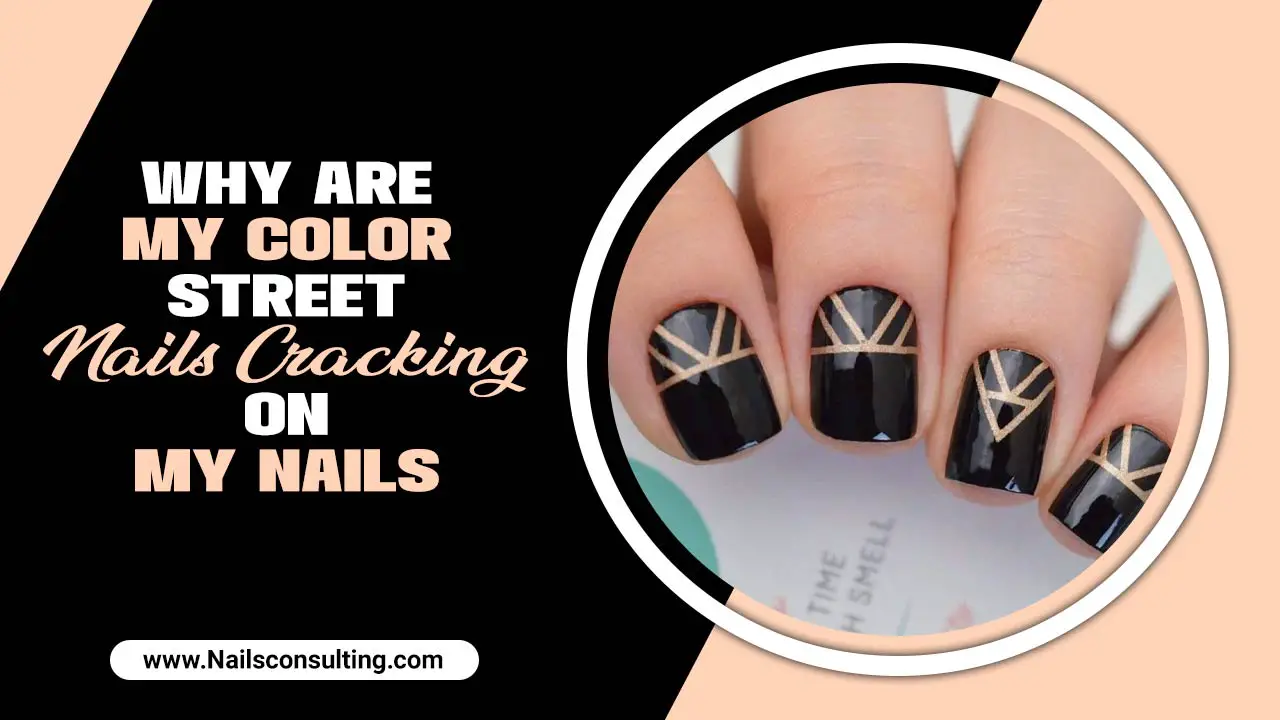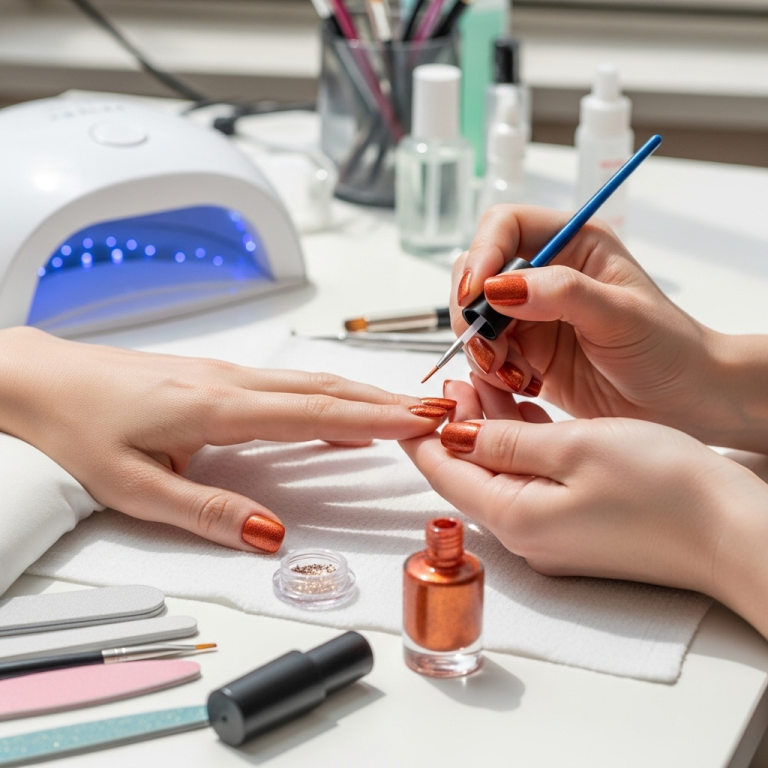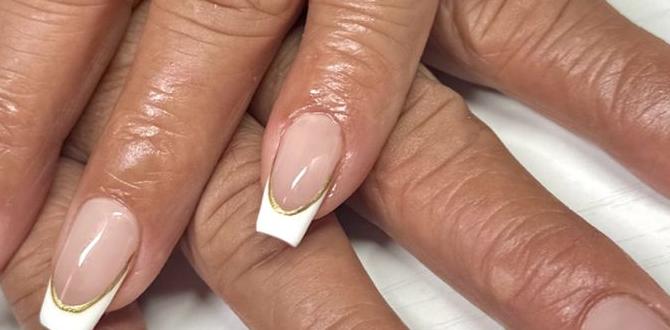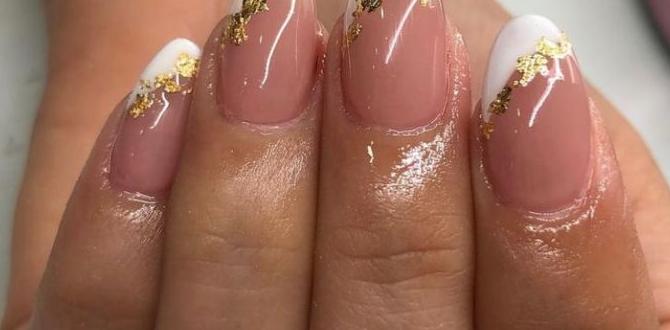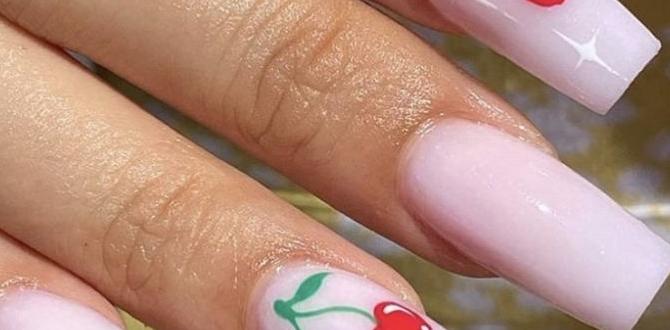Want gorgeous nails that are kind to the planet? Discover easy eco-friendly nail polish designs! Learn how to pick sustainable polishes, create beautiful styles with natural tools, and care for your nails consciously. Get inspired with simple, chic looks anyone can do at home.
Feeling a little guilty about your love for bright, beautiful nails? We get it! Sometimes it feels like gorgeous manicures and being kind to the earth don’t go hand-in-hand. But what if we told you that you can rock stunning nail art while making greener choices?
It’s totally possible! Many of us want to be more eco-conscious, but the beauty world can feel overwhelming. You might wonder if “eco-friendly” means less color, less sparkle, or a ton of complicated DIY steps. Spoiler alert: it doesn’t!
This guide is your friendly, no-stress introduction to the wonderful world of eco-friendly nail polish designs. We’ll break down everything you need to know to create beautiful looks that you can feel great about. From choosing the right polishes to simple, chic designs, get ready to transform your nail game sustainably!
Ready to dive into guilt-free glamour? Let’s discover some genius eco-friendly nail polish styles!
What Does “Eco-Friendly Nail Polish” Even Mean?
When we talk about eco-friendly nail polish, we’re not just talking about the color staying on your nails! It’s about the whole journey of the polish, from what’s inside the bottle to how it’s made and packaged. Think of it as a holistic approach to beauty that cares for you and the planet.
Here’s what makes a nail polish lean towards the “eco-friendly” side:
- Toxin-Free Formulas: Many traditional polishes contain harsh chemicals like formaldehyde, toluene, and dibutyl phthalate (DBP). Eco-friendly options aim to exclude these, often being labeled as “3-free,” “5-free,” “7-free,” “10-free,” or even “16-free.” This means fewer potentially harmful ingredients for you and less impact on the environment when the polish washes off into waterways.
- Sustainable Ingredients: Some brands are exploring plant-derived ingredients, natural pigments, and sustainable sourcing for their formulas. This reduces reliance on petrochemicals.
- Cruelty-Free and Vegan: A truly eco-friendly product will not have been tested on animals (cruelty-free) and will contain no animal-derived ingredients (vegan). This is a huge part of ethical beauty.
- Eco-Conscious Packaging: This includes using recycled glass bottles, recyclable plastic, or even innovative biodegradable materials. Less plastic waste is always a win!
- Ethical Manufacturing: Brands that prioritize fair labor practices and minimize their carbon footprint during production also fall under the eco-friendly umbrella.
Finding these polishes might seem tricky at first, but it’s getting easier every day! The beauty industry is buzzing with innovation, and more brands are stepping up to offer sustainable choices. You’re making a great choice by looking into this!
Why Choose Eco-Friendly Nail Polish Designs?
Beyond just looking good, choosing eco-friendly nail polish for your designs makes a real difference. It’s a small change that adds up!
- Healthier for You: By avoiding harsh chemicals found in conventional polishes, you reduce your exposure to potential irritants and toxins. This is especially important if you have sensitive skin or allergies.
- Better for the Environment: The chemicals in regular nail polish can end up in our water systems and soil when we remove it or when bottles are disposed of improperly. Opting for eco-friendly formulas helps minimize this environmental impact.
- Supports Ethical Brands: Choosing brands that prioritize sustainability, cruelty-free practices, and ethical production means you’re voting with your wallet for a more responsible beauty industry.
- Inspires Conscious Living: Incorporating eco-friendly choices into your beauty routine can be a gateway to making more sustainable decisions in other areas of your life. It’s about feeling good inside and out!
- Still Trendy & Beautiful: The best part? You don’t have to sacrifice style! Eco-friendly polishes come in every color imaginable, and there are tons of fun, creative designs you can achieve.
You’re not just getting a pretty manicure; you’re participating in a movement towards more mindful beauty. How cool is that?
Your Eco-Friendly Nail Polish Toolkit: Simple & Sustainable
Getting started with eco-friendly nail designs doesn’t require a whole new arsenal of complex tools. Many everyday items you might already have can work perfectly, and you can opt for sustainable versions of professional tools.
Essential Eco-Friendly Polishes
The foundation of any eco-friendly design is, of course, the polish itself! Look for brands that are:
- X-Free: Aim for at least 3-free, but 7-free, 10-free, or even 16-free are even better.
- Cruelty-Free & Vegan: Always check for these certifications.
- Made with Natural Ingredients: Some brands highlight plant-based components.
- Packaged Sustainably: Recycled glass or minimal plastic is ideal.
Some fantastic brands to start exploring include Zoya, Ella+Mila, Pacifica, côte, and Hanami. These brands are known for their “X-free” formulas and commitment to ethical beauty.
Sustainable Application & Design Tools
Here’s what you’ll need, with an eco-conscious spin:
- Nail Files: Instead of disposable cardboard files that end up in the trash, opt for a durable glass nail file. They are long-lasting, gentle on the nail, and easy to clean. For eco-friendly disposal, look for files made with recyclable materials when the time comes.
- Cuticle Pushers: A stainless steel cuticle pusher is a fantastic, reusable option. It lasts forever and can be easily sanitized.
- Base Coat & Top Coat: These are crucial for a long-lasting manicure and protecting your nails. Many eco-friendly brands offer these in their toxin-free lines. A good top coat, especially a quick-dry one, can help your design last longer, meaning fewer re-dos and less polish used over time!
- Cotton Pads/Balls: When removing polish, opt for reusable cotton rounds or a cotton-free nail polish remover. If using disposable ones, choose organic cotton.
- Nail Polish Remover: Look for acetone-free and biodegradable removers. Many are formulated with plant-based oils and are much gentler on your nails and cuticles, and better for the environment. Some brands even offer solid or wipe-form removers to reduce plastic packaging!
- Brushes (for detail work): If you’re feeling artistic, a set of fine-tipped nail art brushes made with synthetic bristles and a sustainable handle can be a great investment. However, you can often achieve fantastic results with the brush that comes in the bottle, or even a toothpick!
- Toothpicks: These humble kitchen staples are brilliant for dotting, creating small swirls, or cleaning up edges. Plus, they’re biodegradable!
Remember, the goal is to use what you have, invest in long-lasting, reusable items when possible, and choose products with the most sustainable ingredients and packaging. You don’t need a fancy salon setup to create beautiful nails!
Genius Eco-Friendly Nail Polish Designs: Easy & Chic
Now for the fun part! These designs are perfect for beginners and can be achieved with minimal tools. They’re all about celebrating natural beauty and subtle style.
1. The Effortless “One-Color Wonder”
Concept: Sometimes, the most elegant statement is a single, beautiful color applied flawlessly. Focus on the polish itself!
Why it’s Eco-Friendly: Minimizes polish usage, waste from intricate art, and simplifies removal.
How-To:
- Prep: Start with clean, filed nails. Apply one coat of your favorite eco-friendly base coat. Let it dry completely.
- Apply Color: Apply your chosen eco-friendly polish. Start with a thin coat, brushing from the base of the nail to the tip. Avoid flooding the cuticle. Let the first coat dry for 1-2 minutes.
- Second Coat: Apply a second thin coat for full opacity. Again, avoid the cuticles.
- Clean Up: Dip a small brush (or a straightened paperclip/toothpick) into a little nail polish remover and carefully neaten up any polish that got onto your skin around the nail.
- Seal: Apply a generous coat of your eco-friendly top coat. This locks in the color and adds shine.
- Dry: Let your nails dry thoroughly. A quick-dry top coat can help speed this up significantly.
Pro Tip: Experiment with different finishes – matte, shimmer, or glossy – all from your eco-friendly collection!
2. The Subtle Speckle & Dot Design
Concept: Adding a few small dots or “speckles” of a contrasting or complementary color to a solid base can add visual interest without complexity.
Why it’s Eco-Friendly: Uses minimal additional polish and is very forgiving if you’re not a steady-handed artist.
How-To:
- Base: Apply your eco-friendly base coat and then one or two coats of your main polish color. Let it dry completely until it’s not tacky to the touch.
- Dotting Tool: Use a toothpick, the tip of a fine nail art brush, or even the rounded end of a bobby pin. Dip it into your accent polish color.
- Design:
- For Dots: Gently touch the tip to your nail to create small, even dots. You can place them randomly, clustered together, or lined up across the nail.
- For Speckles: Dab the tool lightly and quickly against the nail a few times for a scattered, confetti-like effect.
- Clean Up: Use a cleanup brush dipped in remover to perfect the edges.
- Seal: Apply a clear eco-friendly top coat over your design to seal it in and add shine.
Color Ideas: Navy base with white speckles, pastel pink with a few gold dots, deep green with black dots, a sheer nude with champagne shimmer dots.
3. The Chic Color Block
Concept: Modern and graphic, this design involves applying two or more distinct colors in geometric shapes or blocks.
Why it’s Eco-Friendly: Uses less polish per section compared to full nail coverage with multiple colors, and tools like tape can be reused if careful.
How-To:
- Base Color: Apply your first eco-friendly polish and let it dry completely.
- Create Divisions: This is where you can get creative!
- Option A (No Tape): Carefully paint a distinct line or block of your second color onto the dried base color. For example, a French tip in a different color, or a half-moon shape at the base.
- Option B (With Tape – Use Sparingly): For crisp lines, use painter’s tape or specialized nail tape. Apply your second color over the exposed nail area. For a true eco-friendly approach, reuse tape if possible by carefully peeling it off and re-sticking it on a non-porous surface if it loses tack.
- Let it Dry: Ensure the second color is completely dry before moving on or applying a top coat, especially if using tape, to prevent smudging.
- Clean Up: Tidy any stray marks with your cleanup brush.
- Seal: Apply a clear eco-friendly top coat.
Design Ideas: A horizontal color split, a diagonal divide, or multiple narrow stripes of different colors.
4. The Natural French Tips & Reverse French
Concept: A timeless classic, modernized with eco-friendly polishes. The reverse French (color block at the cuticle) is a trendy alternative.
Why it’s Eco-Friendly: Uses only a small amount of polish for the tips/cuticles, making your bottles last longer.
How-To (French Tips):
- Apply base coat and 1-2 coats of your nude or sheer pink eco-friendly polish. Let dry.
- Using a fine brush or steady hand, paint a thin white or colored line across the tip of each nail.
- Clean up edges.
- Apply top coat.
How-To (Reverse French):
- Apply base coat and 1-2 coats of your main color. Let dry.
- Use a fine brush to paint a crescent shape along your cuticle line using an accent color.
- Clean up edges.
- Apply top coat.
Tip: Instead of white, try metallic, glitter, or a contrasting bold color for the tips/cuticles to make it more unique!
5. The “Almost Zen” Gradient/Ombre
Concept: A smooth transition of color from one shade to another, either across one nail or from nail to nail.
Why it’s Eco-Friendly: Blending can hide minor imperfections, and it uses a few complementary colors effectively without needing complex patterns.
How-To (Across One Nail):
- Apply base coat and your lightest eco-friendly polish color. Let it dry.
- Take a small makeup sponge or a piece of a regular kitchen sponge (cut small).
- Apply stripes of 2-3 complementary eco-friendly polish colors onto the sponge, side-by-side. Work quickly before they dry.
- Gently dab the sponge onto your nail, starting from the cuticle and rolling/dabbing upwards. You might need a few passes to build opacity.
- While the gradient is still slightly wet, carefully use your cleanup brush with remover to perfect the edges and cuticle line.
- Apply a thick, generous coat of clear eco-friendly top coat. This is key to smoothing out the sponged texture and making the gradient look seamless.
How-To (Nail-to-Nail): Apply one color on your pinky, a slightly darker shade on your ring finger, lighter on your middle, etc., creating a gradient effect across all fingers. This is simply a matter of applying different colors to each nail.
Color Combinations: Think sunset shades (orange, pink, yellow), ocean vibes (blues and greens), or earthy tones (browns and beiges).
Caring for Your Eco-Friendly Nails
Just because you’re using eco-friendly products doesn’t mean your nails shouldn’t be healthy and strong! Good nail care is crucial for any manicure to look its best and last longer.
Maintain Your Tools
- Glass Files: Rinse under water and dry thoroughly after each use.
- Metal Cuticle Pushers: Wash with soap and water and sanitize with rubbing alcohol between uses for best hygiene.
- Brushes: Clean nail art brushes with your acetone-free remover and store them properly.
Nail Health Tips
- Hydrate Cuticles: Regularly use a natural cuticle oil (like jojoba or almond oil) to keep your cuticles soft and healthy. This prevents hangnails and makes for a cleaner polish application.
- Moisturize Hands: Keep your hands and nails moisturized, especially after removing polish or washing dishes. Look for hand creams with natural ingredients.
- Take Breaks: Give your nails a break from polish every so often. This allows them to “breathe” and can help prevent staining, especially from darker colors.
- Gentle Removal: Always use an acetone-free, eco-friendly nail polish remover. Soak your nails for a minute or two to loosen the polish before wiping, rather than scrubbing aggressively. This is gentler on your natural nail.
By incorporating these simple habits, you’ll ensure your nails are in prime condition for any of your beautiful, eco-friendly designs!
Eco-Friendly Polish vs. Traditional Polish: A Quick Comparison
Understanding the differences can help you make informed choices. Here’s a snapshot:
| Feature | Traditional Nail Polish | Eco-Friendly Nail Polish |
|---|---|---|
| Key Ingredients | Often contains harsh chemicals like Formaldehyde, Toluene, DBP, Formaldehyde Resin, Camphor. | Excludes
|

